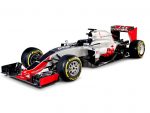Introduction to Formula One
Formula One, commonly known as Formula 1 or F1, is the highest class of international racing for open-wheel single-seater formula racing cars sanctioned by the Fédération Internationale de l’Automobile (FIA). The sport has a rich history, with its first World Championship held in 1950. Over the years, F1 has evolved significantly, with advancements in technology, safety measures, and media coverage.
The adrenaline-pumping races and cutting-edge technology of Formula One have captivated audiences around the world for decades. From iconic circuits like Monaco to the high-speed straights of Monza, F1 showcases some of the most thrilling and prestigious events in motorsport.
In recent years, media coverage of Formula One has expanded, allowing fans to follow their favorite teams and drivers more closely than ever before. Whether it’s through television broadcasts, online streaming platforms, or social media channels, F1 has become increasingly accessible to a global audience.
The evolution of Formula One is a testament to the relentless pursuit of innovation and excellence in the world of motorsport. From the introduction of hybrid power units to the continuous push for aerodynamic efficiency, F1 teams and manufacturers are constantly pushing the boundaries of what’s possible on the racetrack.
As part of the broader automotive industry, Formula One serves as a platform for showcasing cutting-edge technology and driving advancements in engineering and design. The sport’s influence extends beyond the racetrack, shaping the future of automotive innovation and performance.
In conclusion, Formula One represents the pinnacle of motorsport, combining speed, skill, and advanced technology to create an unparalleled racing spectacle. As fans eagerly await each race weekend, the allure of F1 continues to grow, drawing enthusiasts from all corners of the globe.
For more information on automotive innovation and cutting-edge design, explore Lexus Prototypes for a closer look at concept cars and prototypes from one of the leading luxury automotive brands.

Media Coverage of Formula One
Formula One has one of the most extensive media coverages in the world of sports. With a global audience of 600 million people per race in the 2008 season and a cumulative television audience of 54 billion for the 2001 season, Formula One attracts a massive following from fans all around the world. This global appeal has made it possible for fans to watch live or tape-delayed races in almost every country and territory.
In addition to traditional television broadcasts, Formula One has also expanded its media offerings with the launch of F1 TV, an over-the-top (OTT) streaming platform that provides viewers with multiple simultaneous video feeds and timing screens. This innovative platform allows fans to have an immersive experience while watching the races, giving them access to additional content beyond traditional directed race footage and commentary.
Furthermore, in April 2024, Formula One Management (FOM) launched a free ad-supported streaming television (FAST) channel known as the Formula 1 Channel in the United States. This channel offers classic Grands Prix, documentaries, and analysis from past races, providing fans with even more ways to engage with their favorite sport.
The extensive media coverage of Formula One has allowed for greater accessibility and engagement with fans, making it possible for them to stay connected with the sport regardless of their location. Whether it’s through traditional television broadcasts, innovative streaming platforms like F1 TV, or dedicated channels like the Formula 1 Channel, fans have more ways than ever to immerse themselves in the world of Formula One.
To learn more about the impact of Honda in motor racing, check out Honda’s Influence in Racing for an in-depth look at how this iconic automotive company has shaped the world of motorsports.

Racing and Strategy in Formula One
Formula One Grand Prix events are a thrilling combination of speed, skill, and strategy. The weekend kicks off with two free practice sessions on Friday, allowing teams and drivers to fine-tune their cars and get a feel for the track. These practice sessions are crucial for gathering data and making necessary adjustments to maximize performance.
On Saturday, the focus shifts to the qualifying session, where drivers push themselves and their cars to the limit in a quest for the best possible starting position on the grid. This session is not only about speed but also about tactics, as drivers strategize when to set their fastest laps to gain an advantage.
The race on Sunday is where all the preparation comes to fruition. From the lights going out at the start to the checkered flag at the finish, every decision made by drivers and teams can impact the outcome. Pit stops, tire choices, fuel management, and overtaking maneuvers are all part of the intricate strategy that unfolds throughout the race.
One of the most exciting aspects of Formula One is the constant battle between different racing strategies. Some teams may opt for fewer pit stops to gain track position, while others might prioritize fresh tires for optimal performance. This strategic chess match adds an extra layer of excitement for fans as they witness teams and drivers adapt to changing race conditions.
In addition to on-track action, off-track strategy also plays a significant role in Formula One. Teams continually analyze data, develop new technologies, and make strategic decisions to stay ahead of the competition.
For those who appreciate the blend of speed and strategy that Formula One offers, attending a Grand Prix event is an experience like no other. From witnessing lightning-fast pit stops to observing tactical maneuvers on track, it’s a must-see spectacle for motorsport enthusiasts.
To learn about maximizing power in another high-performance vehicle, check out our Maximizing Bugatti power article on Bugatti performance tuning and modifications.

Evolution of Formula One
Formula One has come a long way since its inception in 1950. The evolution of the sport has been marked by significant advancements in technology, safety measures, and global reach.
Technological Advancements
The design and performance of Formula One racing cars have seen remarkable improvements over the years. From the introduction of aerodynamic elements to the development of hybrid power units, technology has played a crucial role in shaping the modern F1 car. These advancements have not only enhanced the speed and agility of the vehicles but have also contributed to making the sport more competitive and thrilling for fans around the world.
Safety Measures
One of the most notable evolutions in Formula One has been the implementation of safety measures to protect the drivers. From the introduction of seat belts and roll cages to the development of impact-absorbing materials, F1 has made significant strides in ensuring the well-being of its competitors. The ongoing commitment to safety research and innovation continues to make Formula One one of the safest racing sports in the world.
Global Reach and Media Coverage
The global reach and popularity of Formula One have expanded exponentially over the years. With a massive television audience and a growing presence on streaming platforms such as F1 TV, fans from all corners of the globe can now enjoy live coverage of races and behind-the-scenes content. Additionally, F1’s expansion into new media platforms has further enhanced its accessibility and engagement with fans.
In conclusion, the evolution of Formula One has been a remarkable journey marked by technological advancements, enhanced safety measures, and unprecedented global reach. As F1 continues to push boundaries and innovate, it remains one of the most exciting and captivating motorsports in the world.
Make sure to check out our coverage on Electric vehicle showcase roundup for more information on cutting-edge automotive events!

F1 TV and Streaming Platforms
In addition to traditional television coverage, Formula One has expanded its media offerings with the launch of F1 TV, an over-the-top (OTT) streaming platform that allows viewers to watch multiple simultaneous video feeds and timing screens. This innovative platform provides fans with an immersive viewing experience, allowing them to customize their race-watching experience and access exclusive content. With F1 TV, viewers can delve deeper into the world of Formula One and gain insights that may not be available through traditional broadcasts.
Moreover, in April 2024, FOM also launched a free ad-supported streaming television (FAST) channel known as the Formula 1 Channel in the United States. This channel offers classic Grands Prix, documentaries, and analysis from past races, providing fans with a wealth of archival content to enjoy. The availability of this channel further enhances the accessibility of Formula One content for fans across the globe.
For enthusiasts who may not have access to traditional cable or satellite television services, these streaming platforms offer a convenient way to stay connected with their favorite sport. Whether it’s through F1 TV’s customizable features or the engaging content available on the Formula 1 Channel, Formula One fans can now immerse themselves in the world of motorsport like never before.
The introduction of these streaming platforms also aligns with the broader trend of media consumption shifting towards digital platforms. As technology continues to advance, Formula One is embracing these changes by providing fans with more options to engage with the sport. With the rise of streaming services shaping how audiences consume entertainment, it’s clear that Formula One is committed to staying at the forefront of media innovation and meeting the evolving needs of its global fanbase.
For those interested in exploring more about exciting automotive experiences beyond the world of Formula One, be sure to check out the Ultimate Lamborghini enthusiast guide for captivating road trip guides and destinations tailored for Lamborghini enthusiasts.
FAQ
What is formula one?
Formula one, commonly known as formula 1 or f1, is the highest class of international racing for open-wheel single-seater formula racing cars sanctioned by the fia.
How popular is formula one?
Formula one can be seen live or tape-delayed in almost every country and territory, attracting a massive global television audience. the 2008 season attracted a global audience of 600 million people per race, with a cumulative television audience of 54 billion for the 2001 season, broadcast to 200 territories.
What media offerings does formula one have?
The sport has expanded its media offerings, including the launch of f1 tv, an over-the-top (ott) streaming platform that allows viewers to watch multiple simultaneous video feeds and timing screens, as well as the formula 1 channel in the united states, showing classic grands prix, documentaries, and analysis from past races.
How is a formula one grand prix event structured?
A formula one grand prix event typically spans a weekend, beginning with two free practice sessions on friday and one free practice on saturday. the qualifying session determines the starting order for the race on sunday.






